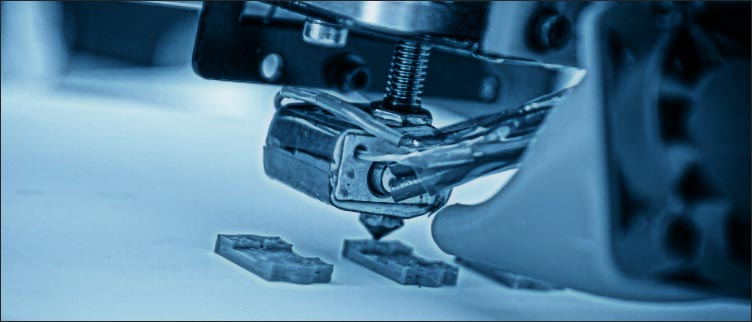[vc_row][vc_column][vc_column_text css=”.vc_custom_1555524146351{margin-bottom: 15px !important;}”]As a builder you spend countless hours developing and designing the perfect structure. When the plans are complete you hit the print key and in a few moments you have a copy of all that hard work in your hands. Printing a document is now just a part of everyday life. However, the art of printing has been a part of society since the 1400’s and has undergone several iterations over the centuries; from letterpress printing to offset printing to desktop printing and it keeps evolving. Can you imagine a world without the printed page?[/vc_column_text][vc_custom_heading text=”What if you hit the print key and instead of getting a set of plans you get a house?” font_container=”tag:h2|font_size:30px|text_align:left|color:%239c5708|line_height:32px” google_fonts=”font_family:Montserrat%3Aregular%2C700|font_style:400%20regular%3A400%3Anormal” css=”.vc_custom_1555524108113{margin-bottom: 15px !important;}”][vc_column_text css=”.vc_custom_1555524115535{margin-top: 0px !important;}”]You may be asking yourself, “What do I care about printing, I’m a builder?” Well consider this, what if you hit the print key and instead of getting a set of plans you get a house? Yes, a real livable structure! With 3D printing that technology exists.[/vc_column_text][vc_row_inner][vc_column_inner width=”1/2″][vc_column_text css=”.vc_custom_1555524216626{margin-top: 0px !important;}”]The term 3D printing refers to the production of physical objects layer-by-layer by an automated and usually computer-controlled machine. The machine, most often guided by digital 3D models, either melts metal or powdered solids or ejects liquid or semi-liquid materials. The technology provides for a wide range of applications, from surgical implants to spare parts for cars to lightweight structures for aerospace projects and yes, even buildings.[/vc_column_text][/vc_column_inner][vc_column_inner width=”1/2″][vc_single_image image=”1780″ img_size=”full” alignment=”center” css=”.vc_custom_1555524419226{margin-bottom: 10px !important;}”][vc_column_text css=”.vc_custom_1555524391472{margin-top: 0px !important;}”]
3D printers at work.
[/vc_column_text][/vc_column_inner][/vc_row_inner][vc_column_text css=”.vc_custom_1555524840195{margin-top: 0px !important;margin-bottom: 20px !important;}”]Many design firms across the world are implementing 3D printing technology. One of the top companies that has dedicated itself to 3D printing in the construction industry is the Chinese firm Winsun. The company made global news in 2014 when it printed ten complete houses. Since then, it has conducted several bold projects, such as printing a complete office building for the Dubai Future Foundation.[/vc_column_text][vc_video link=”https://youtu.be/SObzNdyRTBs” align=”center” css=”.vc_custom_1555524848465{margin-top: 0px !important;margin-bottom: 20px !important;}”][vc_column_text css=”.vc_custom_1555524857489{margin-top: 0px !important;margin-bottom: 20px !important;}”]Other projects include the Dutch company MX3D that has been using it’s robotics and design expertise to develop methods for printing a metal pedestrian bridge; a California/Russian company partnership has reportedly printed a modest concrete house entirely onsite in 24 hours for barely $10,000, a 70% savings over conventional construction methods; and a Tennessee company has developed a process for printing freeform polymer matrices that can be filled with foam or cement.[/vc_column_text][vc_single_image image=”1784″ img_size=”full” alignment=”center” css=”.vc_custom_1555524928835{margin-top: 0px !important;margin-bottom: 10px !important;}”][vc_column_text css=”.vc_custom_1555524920720{margin-top: 0px !important;margin-bottom: 20px !important;}”]
The latest example of a 3D printed house. The images above show the exterior and interior of the structure.
[/vc_column_text][vc_column_text css=”.vc_custom_1555524972617{margin-top: 0px !important;margin-bottom: 20px !important;}”]3D printing is not without it’s critics. There are some who believe with increased automation and mechanization it will have a detrimental effect on the labor force. Also, there are still several building regulations to be delt with and testing that needs to be completed before the technology can really hit it’s stride. But, like with any new technology, eventually these problems will be solved and the construction business can enjoy a whole new world of possibilities 3D printing can bring to the industry, such as:[/vc_column_text][vc_row_inner][vc_column_inner width=”1/6″][vc_single_image image=”1785″ img_size=”full” alignment=”right”][/vc_column_inner][vc_column_inner width=”5/6″][vc_custom_heading text=”Better Project Planning” font_container=”tag:h2|font_size:22px|text_align:left|color:%239c5708|line_height:24px” google_fonts=”font_family:Montserrat%3Aregular%2C700|font_style:400%20regular%3A400%3Anormal” css=”.vc_custom_1555525282876{margin-bottom: 5px !important;}”][vc_column_text css=”.vc_custom_1555525222661{margin-top: 0px !important;margin-bottom: 20px !important;}”]3D printing allows companies to quickly and inexpensively create models to have a visual representation of the project.[/vc_column_text][/vc_column_inner][/vc_row_inner][vc_row_inner][vc_column_inner width=”1/6″][vc_single_image image=”1782″ img_size=”full” alignment=”right”][/vc_column_inner][vc_column_inner width=”5/6″][vc_custom_heading text=”Freedom of Design” font_container=”tag:h2|font_size:22px|text_align:left|color:%239c5708|line_height:24px” google_fonts=”font_family:Montserrat%3Aregular%2C700|font_style:400%20regular%3A400%3Anormal” css=”.vc_custom_1555525363764{margin-bottom: 5px !important;}”][vc_column_text css=”.vc_custom_1555525385085{margin-top: 0px !important;margin-bottom: 20px !important;}”]By reducing the costs associated with nonstandard shapes, 3D printing gives free rein to architects and designers.[/vc_column_text][/vc_column_inner][/vc_row_inner][vc_row_inner][vc_column_inner width=”1/6″][vc_single_image image=”1786″ img_size=”full” alignment=”right”][/vc_column_inner][vc_column_inner width=”5/6″][vc_custom_heading text=”Reduced Supply Costs” font_container=”tag:h2|font_size:22px|text_align:left|color:%239c5708|line_height:24px” google_fonts=”font_family:Montserrat%3Aregular%2C700|font_style:400%20regular%3A400%3Anormal” css=”.vc_custom_1555525465581{margin-bottom: 5px !important;}”][vc_column_text css=”.vc_custom_1555525481715{margin-top: 0px !important;margin-bottom: 20px !important;}”]It is estimated that 3D printing will save construction companies up to 50% on the cost of building a house.[/vc_column_text][/vc_column_inner][/vc_row_inner][vc_row_inner][vc_column_inner width=”1/6″][vc_single_image image=”1783″ img_size=”full” alignment=”right”][/vc_column_inner][vc_column_inner width=”5/6″][vc_custom_heading text=”Greener Construction” font_container=”tag:h2|font_size:22px|text_align:left|color:%239c5708|line_height:24px” google_fonts=”font_family:Montserrat%3Aregular%2C700|font_style:400%20regular%3A400%3Anormal” css=”.vc_custom_1555525528444{margin-bottom: 5px !important;}”][vc_column_text css=”.vc_custom_1555525549093{margin-top: 0px !important;margin-bottom: 20px !important;}”]3D printing relies less on lumber in a home’s framework. Great for “green” construction firms, not so great for the lumber industry.[/vc_column_text][/vc_column_inner][/vc_row_inner][vc_row_inner][vc_column_inner width=”1/6″][vc_single_image image=”1781″ img_size=”full” alignment=”right”][/vc_column_inner][vc_column_inner width=”5/6″][vc_custom_heading text=”Autonomous Construction” font_container=”tag:h2|font_size:22px|text_align:left|color:%239c5708|line_height:24px” google_fonts=”font_family:Montserrat%3Aregular%2C700|font_style:400%20regular%3A400%3Anormal” css=”.vc_custom_1555525605749{margin-bottom: 5px !important;}”][vc_column_text css=”.vc_custom_1555525622702{margin-top: 0px !important;margin-bottom: 20px !important;}”]The skills shortage affecting the construction industry could soon become less relevant. 3D printers require minimal human surveillance.[/vc_column_text][/vc_column_inner][/vc_row_inner][vc_row_inner][vc_column_inner width=”1/6″][vc_single_image image=”1787″ img_size=”full” alignment=”right”][/vc_column_inner][vc_column_inner width=”5/6″][vc_custom_heading text=”Speed of Delivery” font_container=”tag:h2|font_size:22px|text_align:left|color:%239c5708|line_height:24px” google_fonts=”font_family:Montserrat%3Aregular%2C700|font_style:400%20regular%3A400%3Anormal” css=”.vc_custom_1555525667517{margin-bottom: 5px !important;}”][vc_column_text css=”.vc_custom_1555525688412{margin-top: 0px !important;margin-bottom: 20px !important;}”]By operating 24/7 and by reducing onsite glitches, 3D printers can cut construction times dramatically.[/vc_column_text][/vc_column_inner][/vc_row_inner][vc_row_inner][vc_column_inner width=”1/6″][vc_single_image image=”1788″ img_size=”full” alignment=”right”][/vc_column_inner][vc_column_inner width=”5/6″][vc_custom_heading text=”Worldwide Development” font_container=”tag:h2|font_size:22px|text_align:left|color:%239c5708|line_height:24px” google_fonts=”font_family:Montserrat%3Aregular%2C700|font_style:400%20regular%3A400%3Anormal” css=”.vc_custom_1555525734606{margin-bottom: 5px !important;}”][vc_column_text css=”.vc_custom_1555525755637{margin-top: 0px !important;margin-bottom: 20px !important;}”]3D printing is an affordable way to create housing for less fortunate individuals in need of shelter.[/vc_column_text][/vc_column_inner][/vc_row_inner][vc_custom_heading text=”One day, perhaps, large buildings will be printed in their entirety by a single printer.” font_container=”tag:h2|font_size:30px|text_align:left|color:%239c5708|line_height:32px” google_fonts=”font_family:Montserrat%3Aregular%2C700|font_style:400%20regular%3A400%3Anormal” css=”.vc_custom_1555525913102{margin-bottom: 15px !important;}”][vc_column_text css=”.vc_custom_1555525861086{margin-top: 0px !important;margin-bottom: 20px !important;}”]When will 3D printing really become mainstream in the construction industry is up to the industry itself. One day, perhaps, large buildings will be printed in their entirety by a single printer, with no on-site human input apart from the pressing of a switch. That is still a long way off, but as long as investment continues flowing and the learning curve gets straighter, it might be sooner than you think![/vc_column_text][/vc_column][/vc_row]

